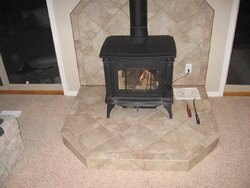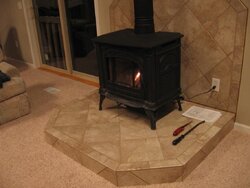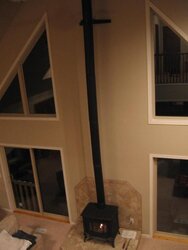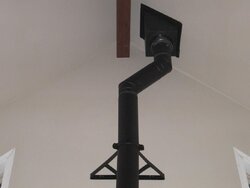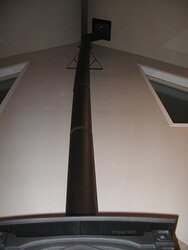Hey guys,
Great forum here. I'm glad I found it. Just recently (about 1 month ago) I installed a small woodstove in my living room. It has two functions.........look nice and help my geothermal system keep my house reasonably warm in the winter. I ran into trouble with using ONLY my geothermal because the capacity wasn't quite good enough, but I always knew I wanted a woodstove anyway. So anyway I'm trying to learn everything I can about wood burning. If you have any generic tips or advice please feel free. Some questions I have:
1 - What have you guys found to be the easiest way to get a fire going from scratch? I've been stuck basically using paper to try to get some pieces of pallets started, but it's been rough.
2 - Does that powder really work to keep creosote away? I've seen some on ebay that advertises if you put a spoonful on a hot fire about once a week or so, it'll eliminate creosote. What about the sweeping logs? Do those work?
3 - My dad told me he had once heard of some product that you can throw into a fire to choke away all of the oxygen and put it out immediately. Anybody know what it's called or if I should even bother with it? I'm planning on buying a fire extinguisher to keep in the kitchen as well.
4 - This spring I plan to start collecting my own wood for next winter (I had to buy a face cord for this winter). How do you know when wood is too old to use?
Great forum here. I'm glad I found it. Just recently (about 1 month ago) I installed a small woodstove in my living room. It has two functions.........look nice and help my geothermal system keep my house reasonably warm in the winter. I ran into trouble with using ONLY my geothermal because the capacity wasn't quite good enough, but I always knew I wanted a woodstove anyway. So anyway I'm trying to learn everything I can about wood burning. If you have any generic tips or advice please feel free. Some questions I have:
1 - What have you guys found to be the easiest way to get a fire going from scratch? I've been stuck basically using paper to try to get some pieces of pallets started, but it's been rough.
2 - Does that powder really work to keep creosote away? I've seen some on ebay that advertises if you put a spoonful on a hot fire about once a week or so, it'll eliminate creosote. What about the sweeping logs? Do those work?
3 - My dad told me he had once heard of some product that you can throw into a fire to choke away all of the oxygen and put it out immediately. Anybody know what it's called or if I should even bother with it? I'm planning on buying a fire extinguisher to keep in the kitchen as well.
4 - This spring I plan to start collecting my own wood for next winter (I had to buy a face cord for this winter). How do you know when wood is too old to use?


 And punky burns just fine thank you, just doesn't give you very much heat for the volume. Of course any wood you burn is always thoroughly dry, right? Have a big piece of semi punky pine in my stove right now. :bug: As Dennis said, you certainly can season next years wood in one season. Best idea would be to cut those trees now before the sap starts to rise in them around mid-March or so. Then as early in the spring as possible, cut them to length, split to size and stack in the sunniest breeziest spot you've got in narrow rows with lots of air spaces between the rows and the logs. Leave them (top covered or not) and you should be good. Oak would do better with 2 seasons but most other varieties should be fine for next winter. Enjoy!
And punky burns just fine thank you, just doesn't give you very much heat for the volume. Of course any wood you burn is always thoroughly dry, right? Have a big piece of semi punky pine in my stove right now. :bug: As Dennis said, you certainly can season next years wood in one season. Best idea would be to cut those trees now before the sap starts to rise in them around mid-March or so. Then as early in the spring as possible, cut them to length, split to size and stack in the sunniest breeziest spot you've got in narrow rows with lots of air spaces between the rows and the logs. Leave them (top covered or not) and you should be good. Oak would do better with 2 seasons but most other varieties should be fine for next winter. Enjoy!